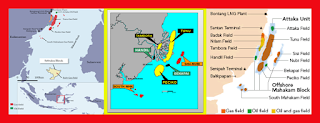The awareness of exploiting non-fossil energy is growing. Automotive manufacturers increasingly aggressively develop electric cars. Nevertheless, the use of fuel oil (BBM) will continue to grow, although electric cars will be present. Even the use of fuel still accounts grow up to 20 years ahead in developing countries like Indonesia.
In Indonesia, the government is drafting a Presidential Regulation on electric cars: the Ministry of Energy and Mineral Resources (ESDM) is also aggressively socializing the presence of electric cars. While from the side of PT Perusahaan Listrik Negara (PLN) provides support by moving quickly to build a charging infrastructure or charging station.
BP Group Chief Economist Spencer Dale said that currently world oil consumption reached 95 million barrels, only 20% or about 20 million used for cars.
"If tomorrow the whole world is full of electric cars, oil consumption is likely to remain," Dale said at the ESDM Ministry on Thursday (14/9).
Dale says, now in the world there are 1 billion cars and only 2 million which is an electric car. And the number of electric cars is likely to increase to 2 billion in the next 20 years. The growth in the number of electric cars comes from developing countries, due to increased welfare and government support.
"There is currently considerable subsidies for electric cars in many countries," Dale said.
The rise of electric cars is also due to social behavior. That is, people still buy electric cars though more expensive, because they care about the environment. There are also those who like new technology or so people think they are good people.
"Others, buying a car is an important investment after the house," he added.
With these various factors, there will be about 10 million electric cars by 2035. This growth is quite high. Even so, Dale believes, oil consumption is only about 1.5 barrels per day or only 1%.
"The impact on oil demand is not great," said Dale.
Especially in Indonesia, last year there has been an increase in energy consumption in Indonesia by 5.9%. And growth in energy consumption in Indonesia continues to increase, especially seeing the statistics of Indonesia's economic growth is predicted to remain at the rate of 5% in 5 years to 10 years.
However, energy consumption in member countries of the Organization for Economic Co-operation and Development (OECD) such as Australia, Germany, France, South Korea, the United Kingdom and the United States tend to fall.
"Oil demand from OECD countries declined in the last 10 years and will continue to decline in the future," said Dale.
Fahmi Radhi Energy Observer of Gadjah Mada University (UGM) said that the government must develop renewable energy, including electric cars.
IN INDONESIA
Mobil Listrik Belum Menjadi Ancaman Minyak
Kesadaran memanfaatkan energi non-fosil kian membesar. Pabrikan otomotif semakin gencar mengembangkan mobil listrik. Kendati begitu, penggunaan bahan bakar minyak (BBM) akan terus tumbuh, meskipun mobil listrik akan hadir. Bahkan penggunaan BBM masih akun tumbuh hingga 20 tahun ke depan di negara berkembang seperti Indonesia.
Di Indonesia, pemerintah sedang menyusun Peraturan Presiden tentang mobil listrik: Kementerian Energi dan Sumber Daya Mineral (ESDM) juga gencar melakukan sosialisasi kehadiran mobil listrik. Sementara dari sisi PT Perusahaan Listrik Negara (PLN) memberikan dukungan dengan bergerak cepat membangun infrastruktur pengisian listrik atau charging station.
Kepala Ekonom BP Group Spencer Dale menyebutkan, saat ini konsumsi minyak masyarakat di dunia mencapai 95 juta barel, hanya 20% atau sekitar 20 juta yang digunakan untuk mobil.
"Jika besok seluruh dunia penuh dengan mobil listrik, konsumsi minyak kemungkinan akan tetap," kata Dale di Kementerian ESDM, Kamis (14/9).
Dale menyebutkan, kini di dunia ada 1 miliar mobil dan hanya 2 juta yang merupakan mobil listrik. Dan jumlah mobil listrik kemungkinan meningkat hingga 2 miliar di 20 tahun ke depan. Pertumbuhan jumlah mobil listrik ini berasal dari negara berkembang, karena terjadi peningkatan kesejahteraan dan dukungan pemerintah.
"Saat ini ada subsidi yang cukup besar untuk mobil listrik di banyak negara" ujar Dale.
Maraknya mobil listrik juga karena adanya perilaku sosial. Yakni masyarakat tetap membeli mobil listrik meskipun lebih mahal, karena mereka peduli terhadap lingkungan. Ada juga mereka menyukai teknologi baru atau supaya orang berpikir mereka adalah orang yang baik.
"Yang lain, membeli mobil adalah investasi penting setelah rumah," imbuhnya.
Dengan berbagai faktor tersebut, akan ada sekitar 10 juta mobil listrik pada tahun 2035. Ini pertumbuhan cukup tinggi. Biarpun begitu Dale yakin, konsumsi minyak hanya berkurang sekitar 1,5 barel per hari atau hanya 1%.
"Dampak terhadap permintaan minyak tidak besar," tegas Dale.
Khusus di Indonesia, tahun lalu telah terjadi peningkatan konsumsi energi di Indonesia sebesar 5,9%. Dan pertumbuhan konsumsi energi di Indonesia terus meningkat terutama melihat statistik pertumbuhan ekonomi Indonesia yang diprediksi tetap berada di angka 5% dalam 5 tahun hingga 10 tahun mendatang.
Namun pemakaian energi di negara anggota Organisation for Economic Co-operation and Development (OECD) seperti Australia, Jerman, Prancis, Korea Selatan, Inggris, dan Amerika Serikat cenderung turun.
"Permintaan minyak dari negara OECD menurun dalam 10 tahun terakhir dan akan terus menurun ke depan," jelas Dale.
Fahmi Radhi Pengamat Energi Universitas Gadjah Mada (UGM) bilang, pemerintah harus mengembangkan energi terbarukan, termasuk mobil listrik.
Kontan, Page-18, Friday, Sept 15, 2017











